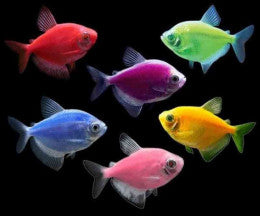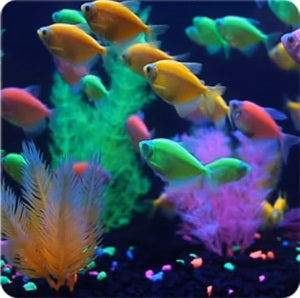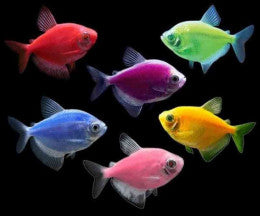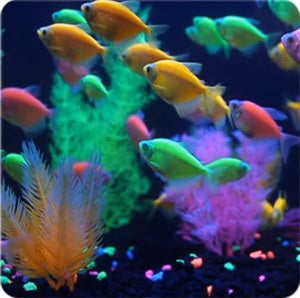Glofish (GMO) Tetra - 35mm
Glofish (GMO) Tetra - 35mm
check_circle Fast Shipping
check_circle Quality Products
check_circle Affordable Price
Reach out to us on ''available to order'' items via WhatsApp or email
Low stock: 1 left
Couldn't load pickup availability
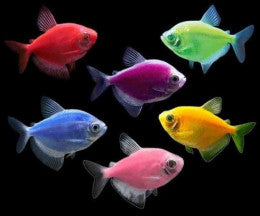
Glofish (GMO) Tetra - 35mm
package_2
Product Description
Product Description
All our fish, shrimp and corals are bagged with fresh oxygen as well as a heat pack in winter.
When ordering livestock please select the box size and add it to your cart for accurate overnight (1-2 days) shipping costs. A small box can take 1-2 bags and a medium box 6 bags. One bag fits max 10 small (1-3cm) fish or max 2 medium (3-5cm) fish or max 1 large (>5cm) fish.
ONE SPECIES PER BAG. Eg: One bag of 10 neon tetra.
GMO Widow Tetra (Genetically Modified Widow Tetra)
Description:
-
Appearance:
- Body: Small and slender with a streamlined shape. The GMO Widow Tetra is a genetically modified variant of the natural Widow Tetra with altered coloration or patterns.
- Color: Typically features vibrant and fluorescent colors or patterns not seen in wild-type versions. Common colors include bright greens, blues, or pinks, often with glowing effects in some strains.
- Size: Generally reaches about 2-3 inches (5-8 cm) in length.
-
Behavior:
- Activity: Active and schooling fish, known for their lively and energetic nature. They are often seen swimming in groups and displaying their colorful patterns.
- Social Structure: Peaceful and social fish that thrive in schools. They are non-aggressive and can be kept with other small, non-aggressive species.
Care Requirements:
-
Tank Size:
- Minimum of 10 gallons (38 liters). A larger tank is preferable to accommodate their schooling behavior and to provide ample swimming space.
-
Water Parameters:
- Temperature: 72-78°F (22-26°C). They prefer a warm, stable environment.
- pH: 6.0-7.5. They thrive in slightly acidic to neutral water conditions.
- Hardness: Soft to moderately hard water. They can adapt to a range of hardness levels but do best in moderately soft to moderate hardness.
- Filtration: Standard filtration is sufficient. Ensure the tank has gentle water movement to accommodate their small size and schooling behavior.
-
Tank Setup:
- Substrate: Soft gravel or sand. They do not have specific substrate requirements but prefer a smooth surface.
- Aquascaping: Provide some decor and hiding spots using rocks, plants, and driftwood. Ensure there is plenty of open swimming space for them to school and exhibit natural behaviors.
- Lighting: Moderate lighting is suitable. They do not have specific lighting needs but should have a regular light/dark cycle.
-
Diet:
- Primary Food: Omnivorous; feed a varied diet including high-quality flakes, small pellets, and live or frozen foods such as brine shrimp, daphnia, and micro-worms.
- Supplemental Food: Offer occasional treats like finely chopped vegetables or algae wafers to provide dietary variety.
-
Behavioral Considerations:
- Compatibility: Best kept with other small, peaceful fish. Avoid larger or aggressive species that might harass them. They are compatible with other community tank species.
- Social Behavior: They should be kept in groups of at least six to reduce stress and encourage natural schooling behavior. Keeping them in larger groups can also reduce territorial disputes and enhance their display of colors.
-
Tank Maintenance:
- Water Changes: Perform regular water changes (20-30% weekly) to maintain water quality and manage the bioload.
- Cleaning: Clean the tank regularly and remove any uneaten food or waste. Ensure the filtration system is effective and not causing excessive water movement.
-
Health Care:
- Observation: Monitor for signs of stress or illness, such as changes in behavior, loss of appetite, or visible symptoms like fin deterioration or discoloration.
- Treatment: Maintain optimal water conditions and consult an aquarium professional if health issues arise. Address any signs of disease or stress promptly to ensure the well-being of your GMO Widow Tetra.
